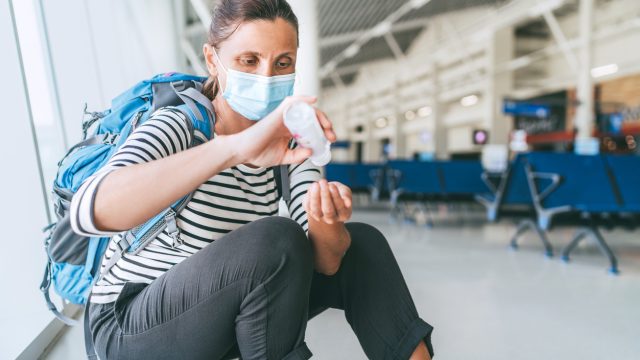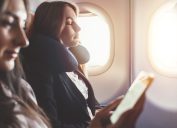These Are the 5 Germiest Places in Airports, According to Science
Results of lab tests find that you may want to pack some extra hand sanitizer.
Even before COVID-19 made us hyper-aware of our microscopic surroundings, it was no secret that getting on an airplane meant coming up close and personal with some seriously germy conditions. What many may not realize is that you're still facing an onslaught of microbes as you check in and prepare to board your flight. And according to recent research, there are some places in airports that are consistently the germiest when tested for viruses and bacteria. Read on to see which surfaces you may want to avoid touching before taking off.
RELATED: Never Do This on a Plane, Infectious Disease Doctor Warns.
1
Shop payment terminals

Picking up a last-minute bottle of water, magazine, or snack can be vital before jetting off. Unfortunately, the same shops that provide travel essentials and meals are also some of the places where you're most likely to find germs—especially on credit card payment terminals that require customers to touch buttons or screens. Results of a study from University of Nottingham found that half of all surface tests taken from payment kiosks were positive for at least one respiratory virus.
2
Security checkpoint trays
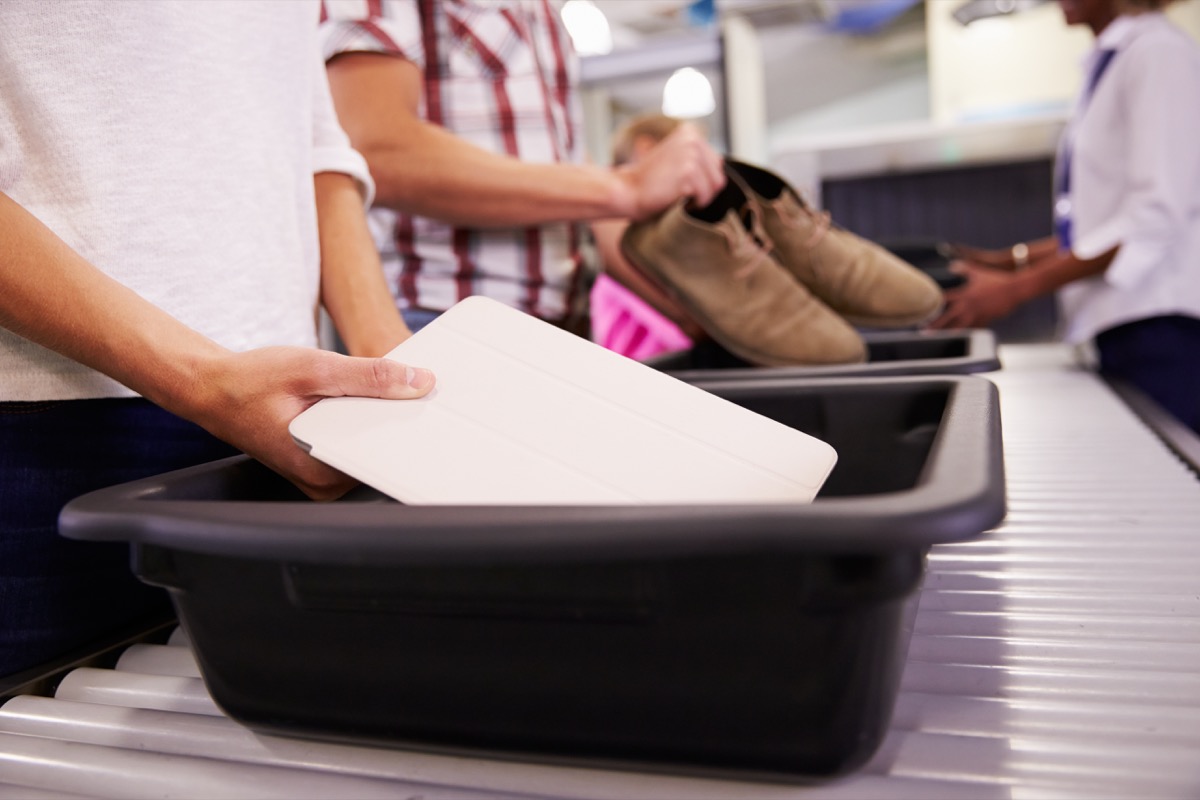
The security checkpoint is already arguably one of the most unenjoyable parts of the airport experience. After all, no one likes having to take off their shoes or rearrange their luggage after a bag gets called over for closer inspection. But according to the University of Nottingham study, the same trays that carry your phone, wallet, and jacket as they're being scanned were also found to be one of the consistently germiest surfaces in airports.
"We found the highest frequency of respiratory viruses on plastic trays used in security check areas for depositing hand-carried luggage and personal items," the study's authors wrote, noting that viruses tend to survive longer on non-porous plastic surfaces. "Security trays are highly likely to be handled by all embarking passengers at airports; nevertheless, the risk of this procedure could be reduced by offering hand sanitization with alcohol handrub before and after security screening, and increasing the frequency of tray disinfection. To our knowledge, security trays are not routinely disinfected. Although this would not eliminate all viruses on hands, (e.g., alcohol gels have been found to be less effective than hand-washing for rhinovirus), it is effective for many viruses, including influenza."
RELATED:
For more up-to-date information, sign up for our
daily newsletter.
3
Water fountain buttons
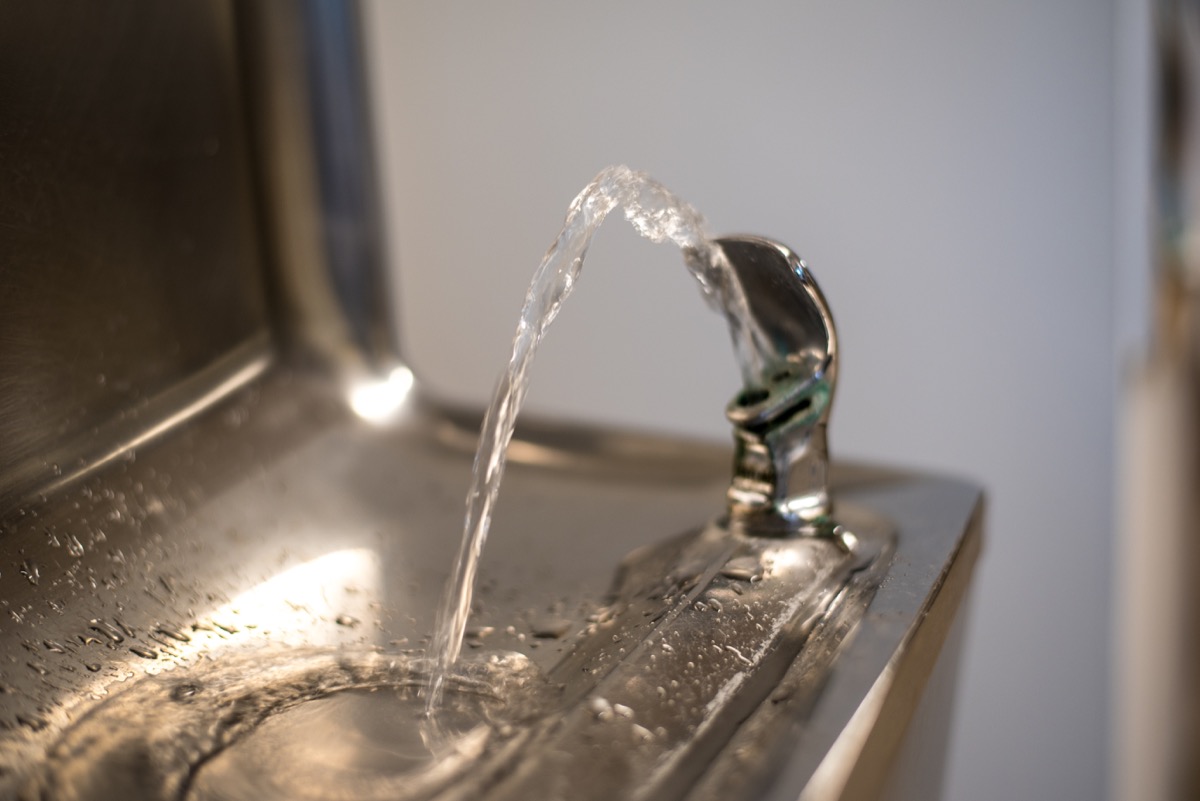
Frequent flyers know that it's essential to stay hydrated while flying. But the next time you go to get a sip from a water fountain in the terminal, you may want to think about washing your hands soon after, too. In a study commissioned by InsuranceQuotes.com, 18 surface tests were conducted across six surfaces from three major U.S. airports during the busy holiday travel season. Results showed that the buttons on water fountains were among the dirtiest places in airports, finding they had an average of 19,181 viable bacteria and fungal cells per square inch, or colony-forming units (CFU). Just how dirty is that? By comparison, most household toilet seats have an average of 172 CFU.
4
Airline gate bench armrests

It can feel lucky to score an open seat near your gate while waiting for your flight to board. But according to the InsuranceQuotes.com study, the seat you take before you get on the plane can be filthy. Results of their tests found an average of 21,630 CFU on chair armrests in boarding areas at gates.
5
Self check-in kiosks
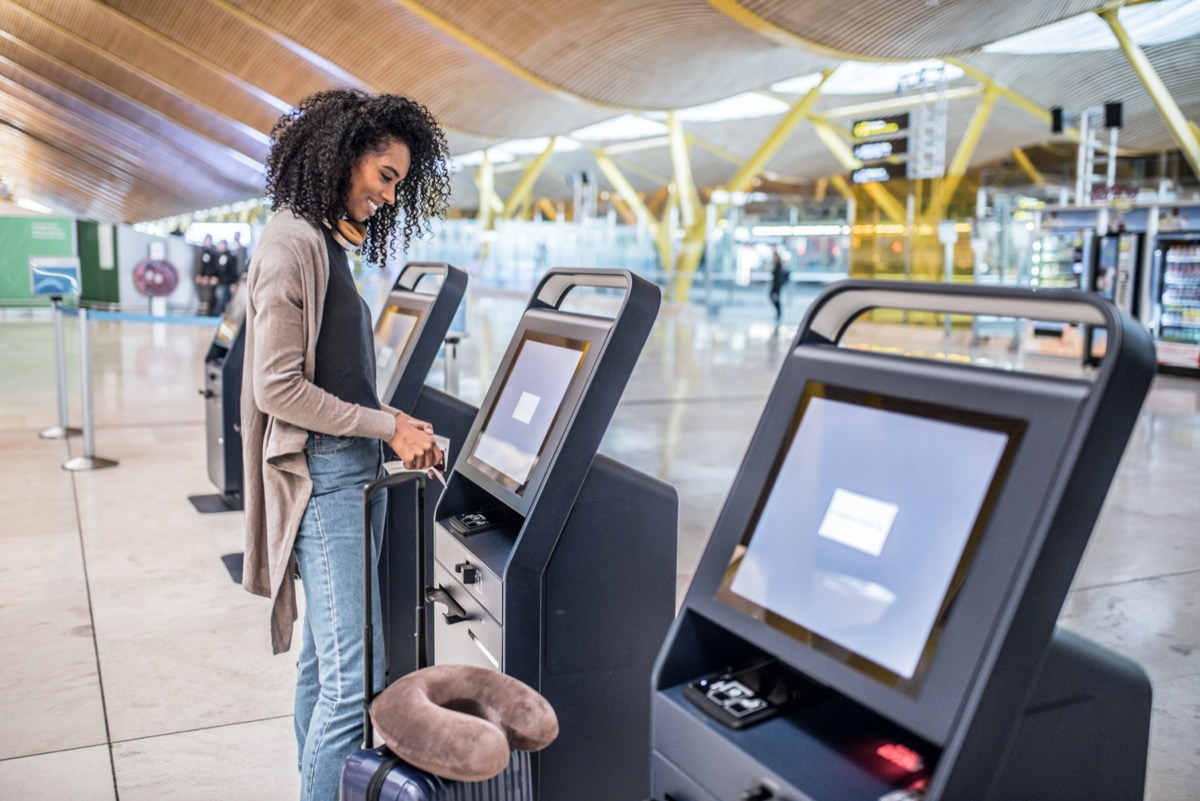
We can thank the addition of self-check-in kiosks for making it easier to get through the airport much faster. But even if you're just looking to print out a copy of your ticket due to a malfunctioning phone or make a last-minute seat change, you might also be unwittingly putting yourself in direct contact with one of the dirtiest surfaces in the entire airport. According to the InsuranceQuotes.com study, self-check-in kiosks contain an average of 253,857 CFU, with researchers noting that one kiosk that was tested had more than 1 million CFU. Fortunately, you can avoid touching the germy machines by downloading airline apps to check in from your phone and download your boarding pass.
RELATED: Never Wear This Type of Clothing on a Plane, Experts Warn.
